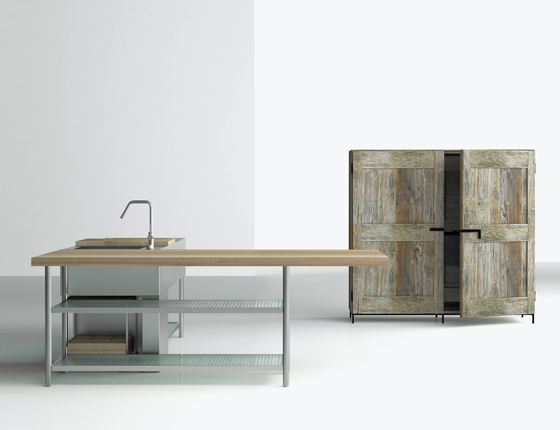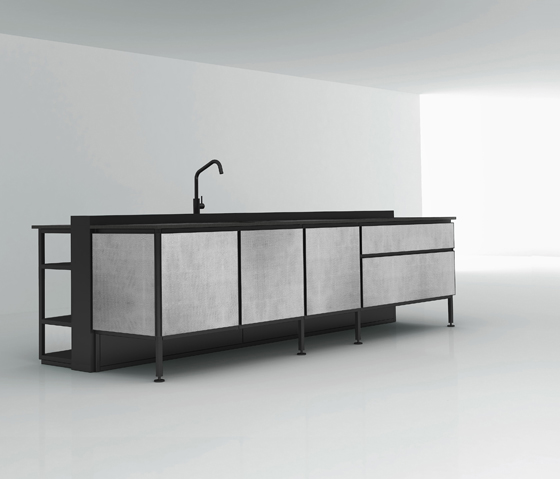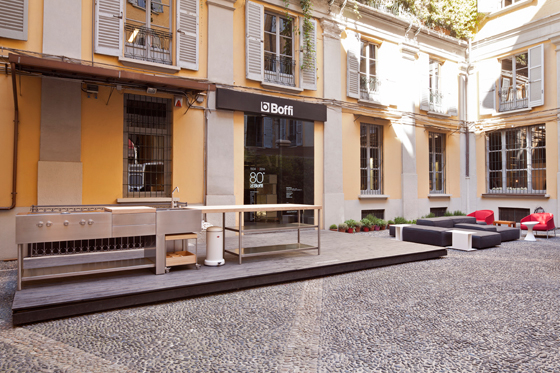Boffi: Celebrating Eighty Years of Emotional Solutions
Brand story by Alex Bradley
Lentate sul Seveso (MB), Italie
04.11.14
On a family holiday to Lake Garda as a teenager, staying near the town of Malcesine, I discovered a design store that seemed to house all the contemporary design I had only ever seen before in books. The shop owner took to my enthusiasm and gave me a bag full of books on Italian design, providing me with a great snapshot of the key design movements and brands that have shaped Italy’s design culture.
‘Salinas’ by Patricia Urquiola is characterised by non-traditional structure, modules and materials
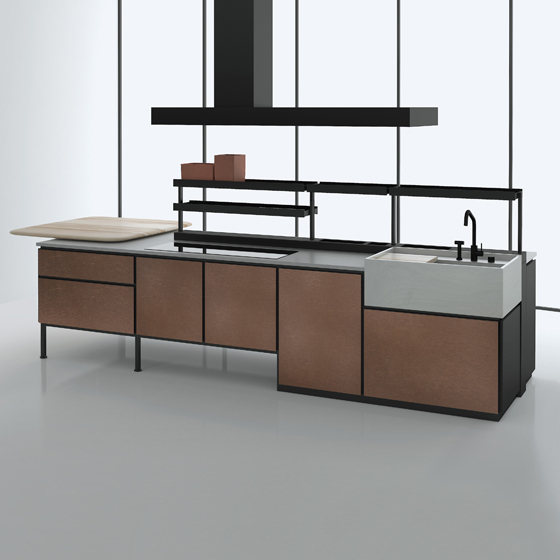
‘Salinas’ by Patricia Urquiola is characterised by non-traditional structure, modules and materials
×One of these brands is undoubtedly Boffi: a company founded in 1934 by Piero Boffi, who left Caproni – an Italian aircraft manufacturer – to create his own craftsman-led company. From these earliest beginnings, Boffi identified creativity, production and entrepreneurship as its core strategic principles, and integrated them into all product decisions and operating processes. In 1947 the first factory was built and a family business was born, with Piero’s sons Dino, Pier Ugo and Paolo entering the company. During the 1950s the Boffi brothers built on their father’s vision, combining the company’s already established creativity with advanced production and technology.
Integrated and Flexible Manufacture
Piero’s founding vision is still apparent today, with advanced production a guiding principle for the company, now particularly renowned for producing high-end kitchens and bathrooms. Its factory is located in Lentate, an area that sits between Milan and Lake Como – the heartland of Italian’s furniture industry, where Boffi is one of many leading Italian brands producing their products.
Boffi’s CEO Roberto Gavazzi explained to me why this is such a fruitful territory for doing business. ‘It is a fantastic competitive advantage being located here. We find skilled workers and there seem to be great ideas in the air – we can exchange these great ideas very easily.’
Boffi’s production facility is a state-of-the-art operation with dedicated ateliers for woodworking and lacquering, with an overarching software solution that manages the whole factory. This allows machinery to be switched very easily and quickly from one type of production to another. According to Roberto, this level of flexibility is a key focus area for innovation. ‘Flexibility is the main characteristic we try to enhance in our production system. We try to supply any kind of solution our customer wants to have. We have a standard, complete line of products that you can mix to create a more personal solution. We also offer special finishes if a client wants a truly tailor-made solution.’
This highly flexible production line and integrated factory facility, which makes the majority of components on site, allows Boffi to respond to the often challenging desires of their discerning clientele.
Joe Colombo was one of the first designers to collaborate with Boffi; he created a mini-kitchen in 1963 measuring only 90 x 75 x 75cm, a design aimed to enable compact living
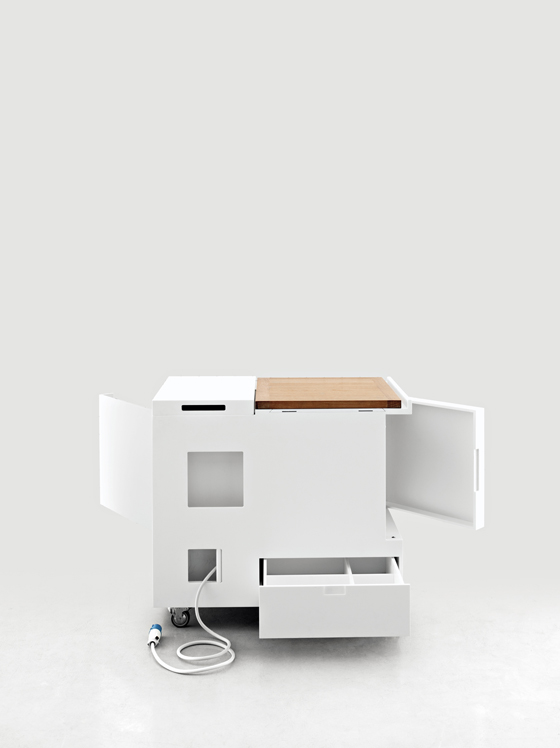
Joe Colombo was one of the first designers to collaborate with Boffi; he created a mini-kitchen in 1963 measuring only 90 x 75 x 75cm, a design aimed to enable compact living
×Emotional Solutions
Turning the focus of our discussion to Boffi’s design approach, Roberto explains the philosophy that guides new product development. ‘We do not simply sell products, we avoid the concept of being satisfied with an object that is merely styling.’ A refreshing take on a design sector that is sometimes singled out as being more style than substance. ‘We provide kitchen solutions and bathroom solutions that are emotional, extremely functional, contemporary, sophisticated and a pleasure for people to use.’
An early emotional solution was by Joe Colombo, one of the first designers to collaborate with Boffi. Colombo – famed for his futuristic designs for micro-living-worlds – created a mini-kitchen measuring only 90 x 75 x 75cm: a design that aimed to enable compact living, and a visionary idea for 1963! Over fifty years later it is a design well suited to today’s urban density issues, succeeding in encapsulating a two-burner stove, an oven, a grill, a refrigerator, a cutting board, a pullout worktop and storage space for cookbooks. In 2006 Boffi reimagined the design in Corian® with slightly larger dimensions: a product launch that is a testament to the way the company appreciates its past whilst still keeping its sights firmly on the future.
‘Open’ by Piero Lissoni is a monobloc island working area in stainless steel, engineered for external use – the first of its kind
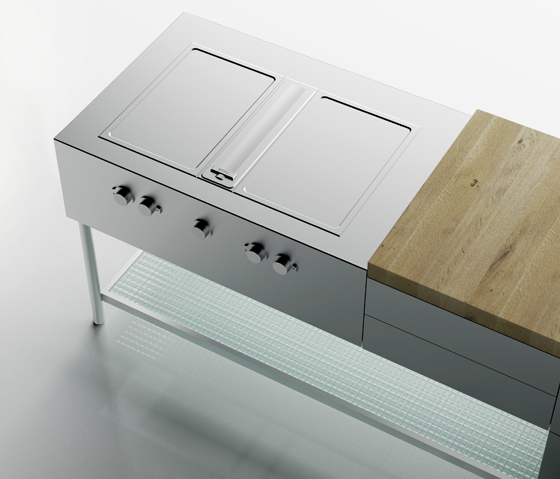
‘Open’ by Piero Lissoni is a monobloc island working area in stainless steel, engineered for external use – the first of its kind
×Celebrating with Products, Not Parties
Since the contributions from Colombo, there has been an impressive list of collaborators under the guidance of three art directors: Luigi Massoni, Antonio Citterio and now Piero Lissoni. The product portfolio has continued to grow whilst maintaining a coherent design language. This year we see the introduction of two new kitchen products and one new designer.
The first product, ‘Open’, is by Piero Lissoni: a monobloc island working area in stainless steel that has been engineered for external use and is the first of its kind. Lissoni describes it as ‘a machine for preparing dinner, having a drink, listening to music, chatting with friends, cooking a meal or enjoying a good dish’. The ‘Open’ set is completed with a bench table fitted with double shelves in wired glass and a stainless steel frame, which can be used as a snack countertop or as a base for preparing food. The result is a sophisticated solution that encourages conviviality around the cooking area. As Roberto Gavazzi adds, ‘this outdoor offer is well suited to our growing markets of American and Asia and although the outdoor market is niche now, we feel it has the potential to grow.’
The second product is ‘Salinas’, designed by a former employee of Lissoni, Patricia Urquiola, who worked on the design of the WK6 Kitchen alongside Lissoni many years ago. This kitchen is characterised by non-traditional structure, modules and materials. The design showcases Urquiola’s ability to combine colours and materials in unique and unexpected ways. Roberto Gavazzi sees it as a product that demonstrates a new direction for Boffi and a perfect way to celebrate the eightieth anniversary of the company: ‘We want to celebrate the eightieth anniversary with great new products that showcase Boffi’s heritage and our vision for the future, not with big parties.’
The design of ‘Salinas’ showcases Urquiola’s ability to combine colours and materials in unique and unexpected ways
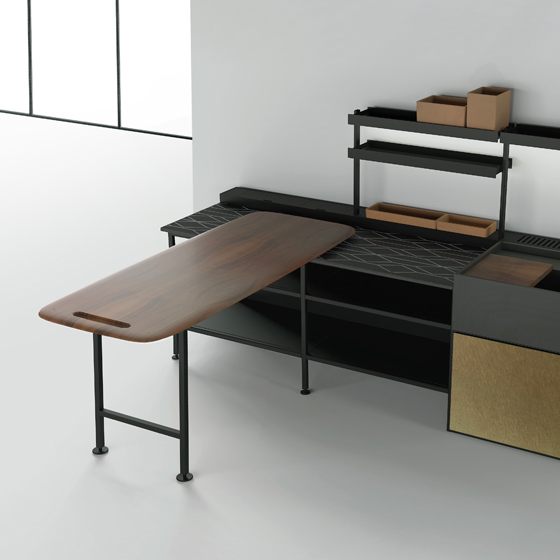
The design of ‘Salinas’ showcases Urquiola’s ability to combine colours and materials in unique and unexpected ways
×The Future: Portfolio and Technology
Focusing on the future, Roberto explains Boffi’s priorities for the years ahead. The first is building on the portfolio extension into wardrobe products. This is the third activity to complement the kitchen and bathroom offers and is something Boffi first explored in the 1960s and 1970s. ‘We want to invest and focus on exploring this complex activity in the interiors world; as with kitchens and bathrooms, these wardrobes are complex modular systems. We believe this is coherent with our mission to sell complicated interior solutions.’
Speaking more broadly about the business Roberto explains that the focus will, of course, be on products, but that the real success factor is the distribution network: ‘It’s very hard to find the right people to sell to in Sydney, Los Angeles, Tokyo and China... that is the secret for success.’
Technology is another way to differentiate. ‘Design is not enough,’ Roberto explains. ‘Technological innovations in production, as well as components for products such as new mechanisms, materials and lighting are crucial for the future.’ He goes on to explain the need for innovation in retail: ‘We will also have to evolve tremendously, our retail spaces even more than others because we sell very expensive products that occupy a lot of space. So the investment in being a kitchen dealer is very expensive now and will continue to be so in the future. We will need to evolve and offer smaller stores with screens or virtual reality to show all of our products.’
‘Solferino’ wardrobe by Piero Lissoni and decoma design is a patented wardrobe system that has a load-bearing and freestanding structure, creating a unique and totally open space
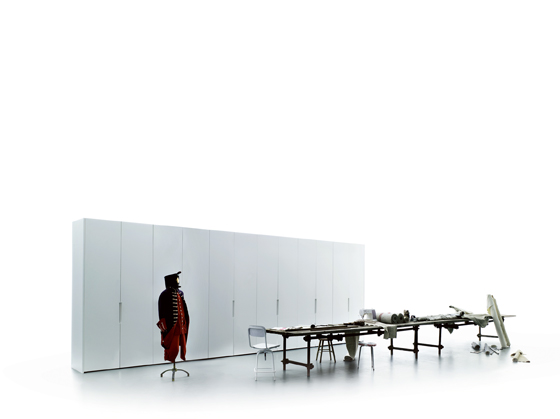
‘Solferino’ wardrobe by Piero Lissoni and decoma design is a patented wardrobe system that has a load-bearing and freestanding structure, creating a unique and totally open space
×Physical-digital Retail
The seamless transition from physical to digital experiences is a key retail trend, and a notable reference point is the ‘Audi City’ showroom in London. This is a good example of showcasing a product portfolio in a compact city environment, although it does lack a more emotive element; constantly touching a screen is not an elegant experience and in the case of a Boffi product certainly wouldn’t convey a sense of the craftsmanship behind it.
If you’ve had the pleasure of visiting Boffi’s showroom in the historic Brera quarter of Milan – an experience that certainly built on my appreciation of Italian design first discovered during my Lake Garda trip as a teenager – you’ll see a demonstration of Boffi’s desire to reference its heritage and at the same time focus on the future. The original character of the old Milanese building has been preserved whilst creating some contemporary loft-like spaces, showcasing Boffi’s entire collection in a grand 1300 square metre space.
This unique experience cannot be emulated everywhere – nor should it be – especially in densely populated urban centres. As Audi has demonstrated, the use of technology can create enticing in-store experiences, well suited to today’s compact city context.
Boffi’s showroom in the historic Brera quarter of Milan showcases the entire collection in a grand 1300 square metre space
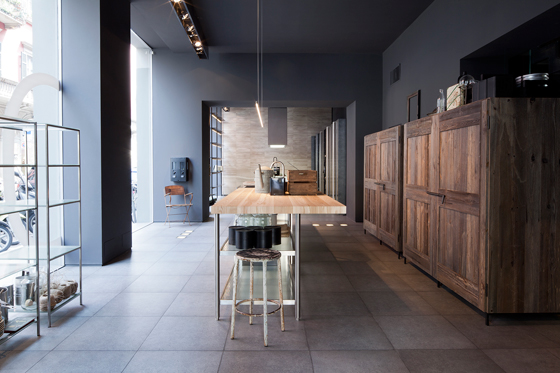
Boffi’s showroom in the historic Brera quarter of Milan showcases the entire collection in a grand 1300 square metre space
×Perhaps in the not too distant future we’ll see a demonstration of Boffi’s ability to respect the past whilst responding to the needs of the future with an emotive physical-digital-store experience. A store that not only showcases its product portfolio, but also respects its past and demonstrates its craftsmanship – all within a compact city environment.
Here’s to being eighty years young.



